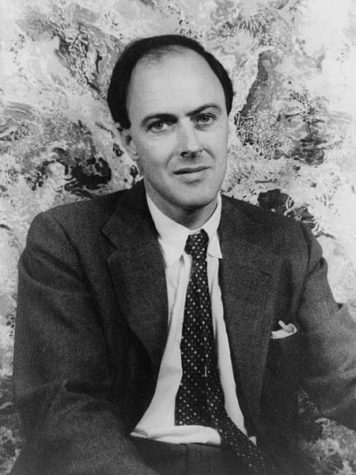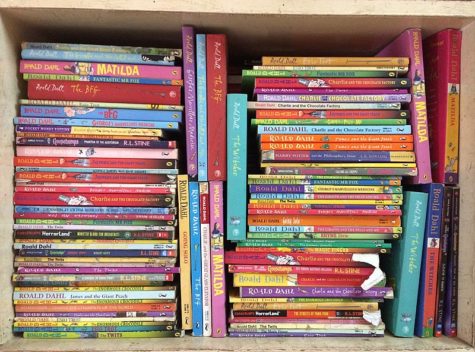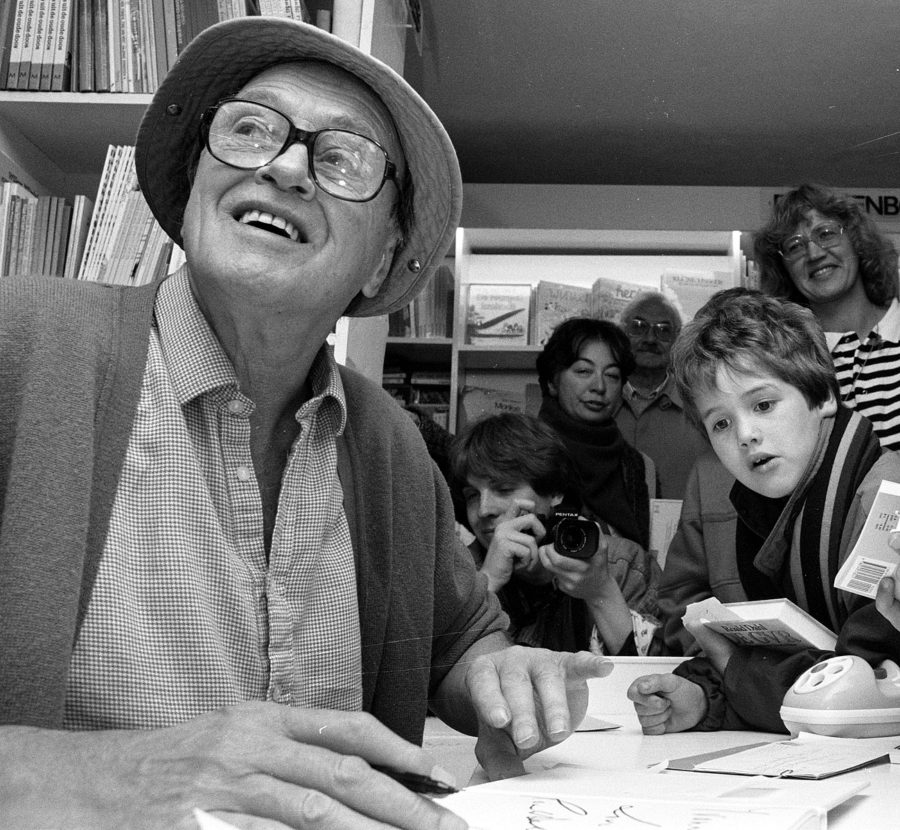The Swashboggling Life and Legacy of Roald Dahl
Swashboggling (adj.), means very special — at least according to seminal children’s author Roald Dahl. Children all over the world have read Dahl’s work for decades and, as we grow up, we finally come to appreciate the spellbinding worlds that Roald Dahl created for us.
Rob Bogaerts / Anefo, CC0, via Wikimedia Commons
Roald Dahl’s appreciation for his readers is shown by this meeting with his fans in Amsterdam.
From whoppsy-whiffling chocolate factories to hopscotchy life in an enormous peach, Roald Dahl created countless imaginary worlds for children all over the globe to immerse themselves in. The unique characters and stories he has brought to life have helped children learn about rights and wrongs, responsibility, and comradery. It was Dahl’s rich background that shaped his lengthy index of eccentric children’s books, now regarded staples of childhood reading, around the world.
A Hero’s Origin Story
Roald Dahl was born on September 13th, 1916 in Llandaff, Wales to a Norwegian family. He was uniquely named after Roald Amundsen, the first man to reach the South Pole. Dahl’s early life was filled with ups and downs, with the tragic death of his sister and father but also a new beginning when he enrolled in boarding school as a young boy.
Dahl: The Adult Years
After becoming an adult and finishing school, Dahl’s adventurous side got the best of him as he traveled all over the world, from Canada to East Africa, before eventually enlisting in the Royal Air Force in 1939. He was, by now, twenty-three years old. This would later become the basis of many of his books such as BFG and The Gremlins.
During his enlistment, Dahl soon rose to the esteemed rank of fighter pilot, where he flew missions in Libya, Greece and Syria during World War II. His pilot career came to an unfortunate close, as seven years in he was shot down in the desert by an enemy plane, resulting in life-threatening injuries to his head, face, and back. Although tragic, this incident would give Dahl the fateful push he needed to start writing.

Attribution: Carl Van Vechten, Public domain, via Wikimedia Commons
Spark in Writing:
After his recovery, Dahl was asked by C.S. Forester to write about his wartime experiences, which eventually was featured in a newspaper, the Saturday Evening Post. Dahl’s primary works were originally published for other entities, like his recollections of war and his first official book, The Gremlins, which was written for Walt Disney in 1943. However, he did not reach his literary peak until the 1950s – 1960s when he wrote James and the Giant Peach and Charlie and the Chocolate Factory, whilst writing screenplays and for the movie adaptations of his infamous candy factory story and for other adult books.
Life To Paper:
Dahl’s intensely unique stories may seem as if they were conceived from thin air, but there are actually a lot of personal details that Dahl includes and uses as inspiration.
Charlie and the Chocolate Factory is based on Dahl’s childhood memories of sweet shops. As a child Dahl recounts that his happiest moments were when he made small visits to his local candy shop. Additionally, the idea of the chocolate factory in the fictional book was based on Cadbury’s chocolate factory, where Dahl and his companions often went to taste test new chocolate bars.

Attribution: solarisgirl, CC BY-SA 2.0 <https://creativecommons.org/licenses/by-sa/2.0>, via Wikimedia Commons
“I had no idea that these stories were based on real-life events, I always thought that Dahl just had an intensely vivid imagination. But somehow, knowing that the books are partly based on real events is reassuring,” said Jolly Zheng ’22.
Continuing on with Dahl’s primary school years, the book Matilda’s Miss Trunchbull, an overpowering and violent school principal, was based on Dahl’s own experiences with strong-headed teachers and headmasters during his years at boarding school. Additionally, the protagonist, Matilda, is based on the famed composer Wolfgang Amadeus Mozart, whom Dahl had a fascination with because Mozart started composing music at an incredibly young age.
His Own Style:
Dahl is known for crafting colorful pictures for child audiences, using literary devices to truly get them engorged with his fascinating tales. One of his more prominent ways of doing so is by creating his own words. From delightful, positive words like “phizz-whizzing” to whimsical words that are used to describe disgust like “uckyslush,” Dahl allows his young readers to figure these words out for themselves, as most of them are made with onomatopoeias, which is a word that depicts a sound, a literary device that young children love.
Although made up, many of these words have made their way into our own society. One that many might be familiar with for describing exquisite cuisine is “scrumdiddlyumptious.”
“The words that Dahl uses are memorable. When I was a kid reading his works, they really helped me paint an image of the characters and plot in my head. His words are what really makes his books unique,” said Emily Piao ’22.
His unique style is not just applicable to his writing techniques, but the content of his stories as well. It elevates readers’ sense of imagination to a different level while remaining somewhat realistic and relatable.
All of Dahl’s stories are centered around children, but the reason they especially stick with children as they transition into adulthood is because of the relatable element of reality. This element of reality is often overlooked at a young age, but as we look back as mature adults, we realize that children and adults have more in common than they think. For example, we see selfless Charlie Bucket spend all his meager savings on a chocolate bar that he hopes contains a golden ticket. But right next to Charlie, we see his calm grandfather, and although he insists that acquiring the ticket does not matter, he is overjoyed at the prospect of taking a tour of the candy factory. All children have a sense of hope and innocence in them, and as Dahl so often exemplifies, adults do too.
Many children and adolescents were raised by reading books by Roald Dahl and it makes sense as to why. His colorful language alongside the authentic inclusion of real events from his life makes his stories entertaining for young minds while still being educational. In fact, these stories can serve as a blueprint for our lives as we mature, making sure we keep in touch with the versions of ourselves we were many, many years ago.
All children have a sense of hope and innocence in them, and as Dahl so often exemplifies, adults do too.
Soree Park is a Features Section Editor for ‘The Science Survey.’ Through her work editing Features articles and writing her own articles, she has...











